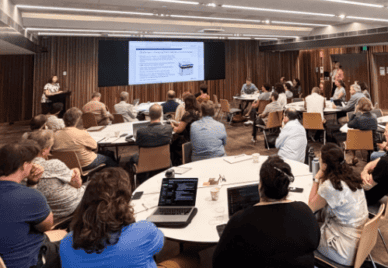
Workshop Addresses Wildlife Camera Trap, Ecoacoustic and Drone Data Challenges
Exploreabout Workshop Addresses Wildlife Camera Trap, Ecoacoustic and Drone Data Challenges
A key outcome of the Marine Data Enhanced Virtual Laboratory project is the production of the first marine-freshwater discharge dataset collection that covers the entire Australian coastline.
This project was funded by the Australian Research Data Commons (ARDC) and led by University of Tasmania, via the Australian Ocean Data Network (AODN) and developed a web service that allows ocean modellers to obtain physical observations, quickly perform model validation, and help with data assimilation.
“One of the greatest challenges in ocean modeling is gaining access to relevant forcing datasets such as atmospheric reanalyses, bathymetry, tidal forcing or information relating to freshwater discharge at the coast. Through the implementation of the Marine DeVL, we have been able to acquire, curate and make available, a large number of dataset collections to the Marine community,” Sebastien Mancini, Director, Australian Ocean Data Network said.
The collection created by this project contains a curated list of datasets such as atmospheric fluxes and tidal information that are used in modelling and made available through a single central repository. A major highlight is the newly developed National Coastal Discharge Dataset (NCDD). This data set has been used to estimate the volume of fresh river water released into the ocean around the entire Australian coastline, between the years of 1993 and 2016.
To support this kind of data, the Marine DeVL project created a world first web service that automates steps involved in data assimilation and can aggregate, average, error-adjust, and co-locate several observations within the individual elements of a numerical model. The result is called a superobservation.
The creation and implementation of these datasets and services are an essential step in supporting the Australian National Shelf Reanalysis1 project—a significant milestone within the research community.
This project was funded by the ARDC, led by the Australian Ocean Data Network as part of the Integrated Marine Observing System (IMOS) – University of Tasmania and involved the following partners: Bureau of Meteorology Science for Services and Community Forecasts Programs (BoM), CSIRO Oceans & Atmosphere Coastal Modelling Team (CSIRO), National Computational Infrastructure (NCI), South Australia Research and Development Institute (SARDI), University of New South Wales (UNSW), University of Western Australia (UWA).